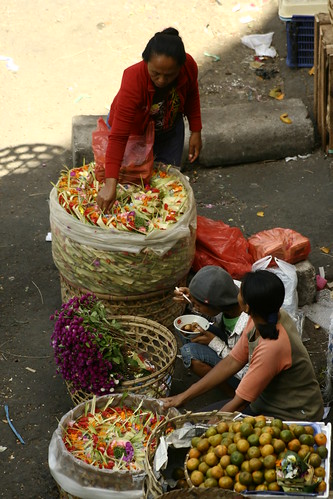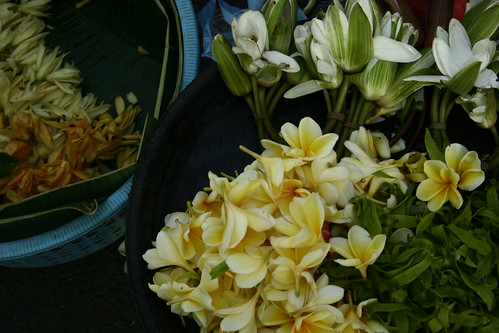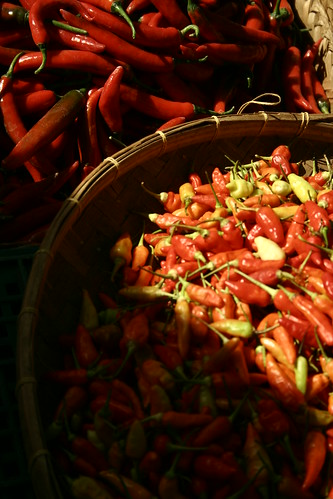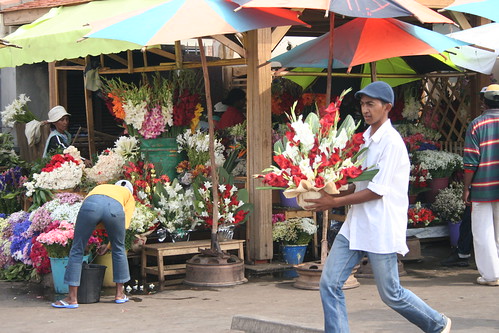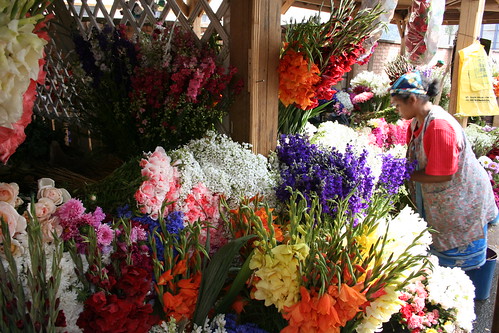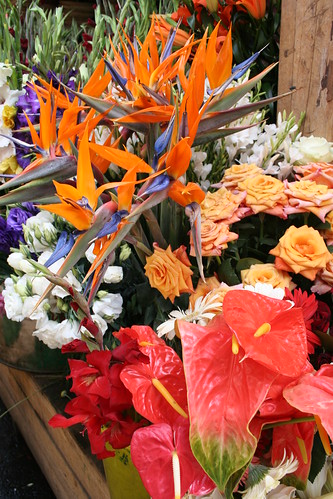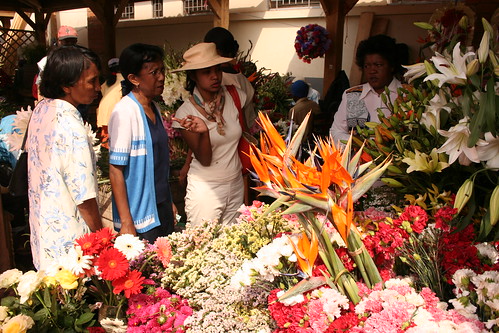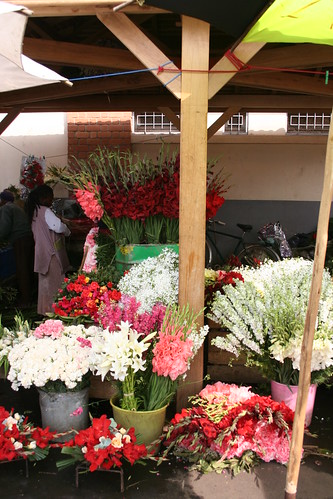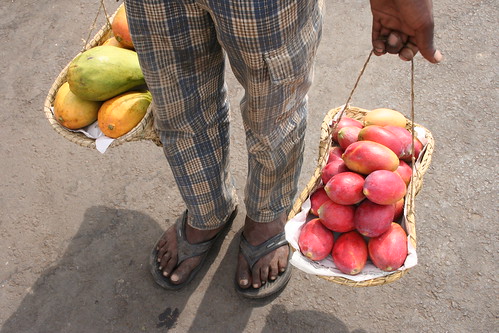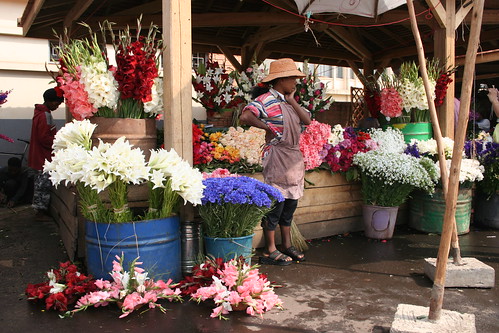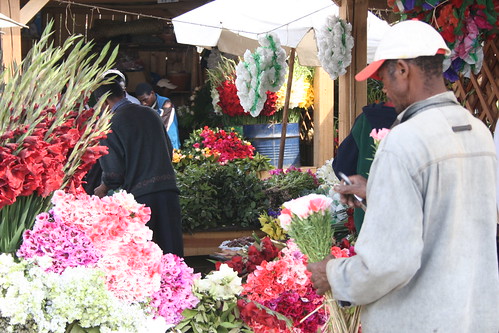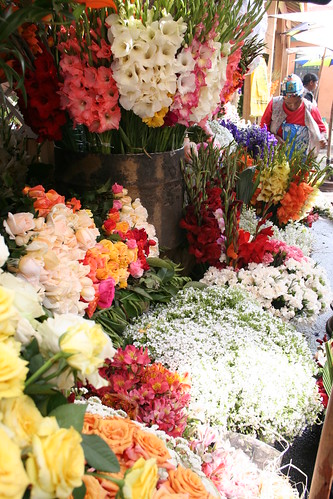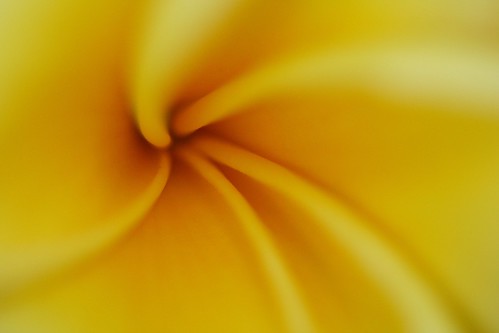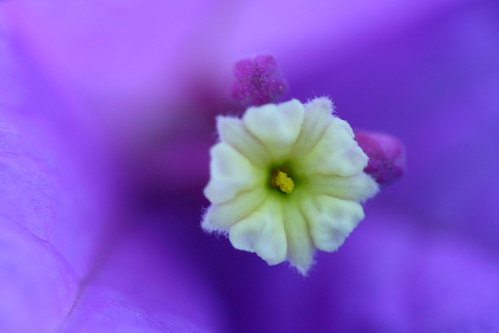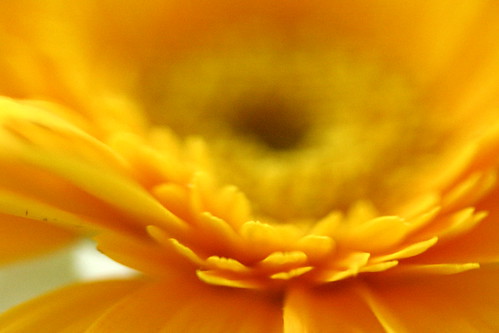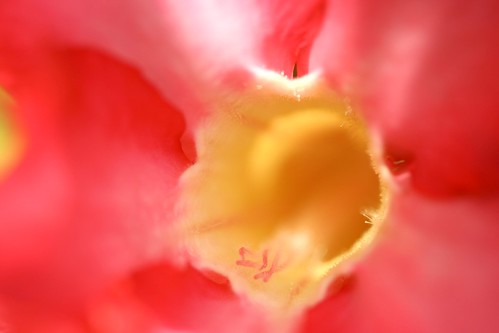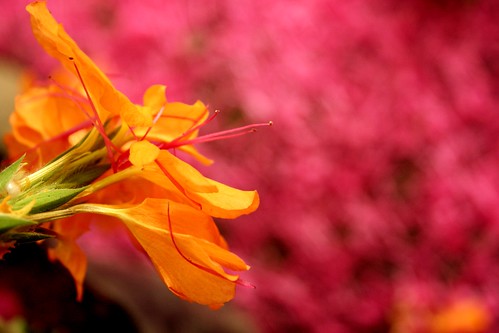I’ve always been fascinated by public markets. They are a generous window to the psyche of the people. Markets throbs of teeming humanity- crowded, noisy, smelly and flashy. Now imagine that the market is Pasar Badung, the city is Denpasar and the island is Bali.
In the last 15 years, I have visited or shopped at Pasar Badung several times. Reasons were mundane. I would not even want to recall what pedestrian items I was buying. This time however, I went there with another mind set. I brought my camera. Difficult it may be but I wanted to present in photographs the cacophonous sounds, the heady aroma and the clashing colors that unabashedly are Bali.
As in most markets in Southeast Asia, Pasar Badung is a hive of commerce all day long. However, it is busiest late in the afternoon stretching into the night. I was there at 3PM, a bit too early. The courtyards around the building were just starting to fill up with vendors setting up their stalls.
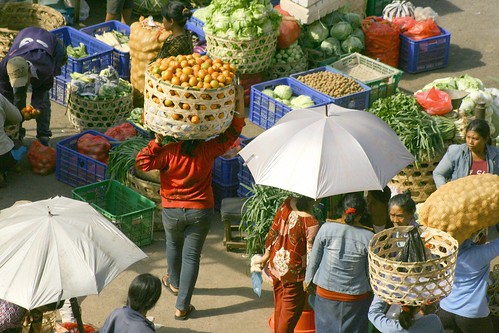
Canon EOS 350D Digital, 1/4000s, f/5.6, 155mm, ISO 400, -1.0EV
fresh produce at the Pasar Badung, Denpasar, Bali, Indonesia
We wandered around the four storeys of the building but most animated are the activities outside, in the open areas, and not inside.
There are lots of things to preoccupy me at Pasar Badung. But a market experience would not be complete without sampling local goodies. My friend sought out the local ice sundae. I sampled it too and it was appropriately sweet, replete with fruits and local homemade condiments.
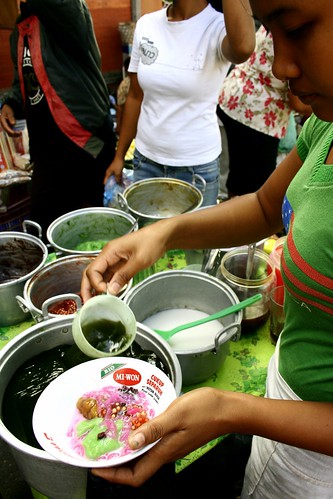
Canon EOS 350D Digital, 1/200s, f/5.6, 18mm, ISO 400, +1/3EV
local ice sundae at the Pasar Badung, Denpasar, Bali, Indonesia
I preferred fruits though. I was looking for mangga manalagi but this terribly sweet mango variety is more common in Central Java. The Balinese version, the mangga harum manis (literally “sweet aroma”), was the one in season, so we gladly bought some. Price was cheap and was ¼ of the tag in supermarkets.
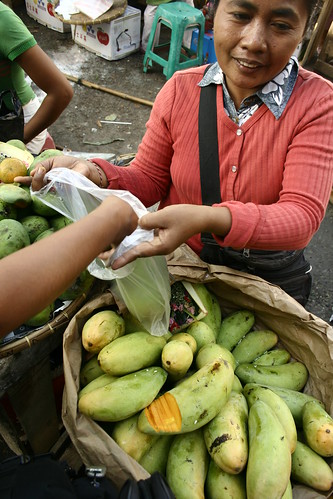
Canon EOS 350D Digital, 1/80s, f/5.6, 18mm, ISO 200
buying mangga harum manis (“sweet aroma” mango) at the Pasar Badung, Denpasar, Bali, Indonesia
As I roamed around the fresh produce section, I found myself gravitating towards my favorite vegetables: chillies. Plump and ripe, they screamed for attention. They are always highly photogenic. Eagerly, I tried to capture two varieties of lombok peppers in one frame to maximize the contrast of the deep red and the yellow orange.
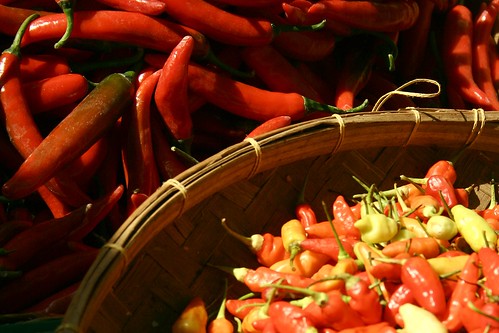
Canon EOS 350D Digital, 1/1250s, f/5.6, 51mm, ISO 200, -1/3EV
varieties of lombok pepper at the Pasar Badung, Denpasar, Bali, Indonesia
Another particularly interesting and unique in Bali markets is the canang section. These are the offerings that every Balinese household offer without fail early in the morning and late in the afternoon at their altars, places of work or just about any place of consequence. Literally millions of these tiny cradles of flowers and food are offered and dispensed with on a daily basis so the commerce of flower petals, the preferred ingredient, is brisk everywhere.
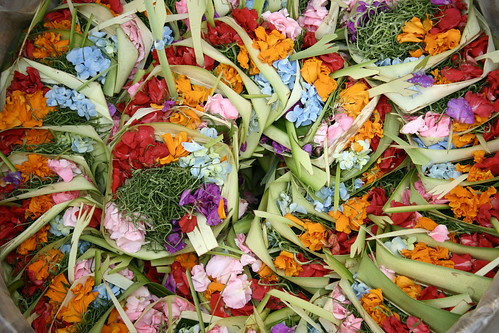
Canon EOS 350D Digital, 1/160s, f/5.6, 55mm, ISO 400, +1/3EV
canang offerings for sale at the Pasar Badung, Denpasar, Bali, Indonesia
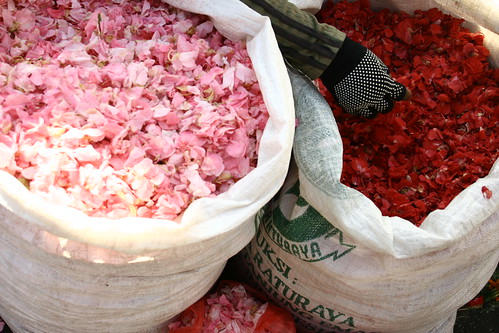
Canon EOS 350D Digital, 1/125s, f/5.6, 30mm, ISO 100, +4/3EV
rose petals by sackfuls at the Pasar Badung, Denpasar, Bali, Indonesia
The flowers are cultivated in massive scale in the highlands of Bali so they actually are reasonably cheap. Moreover, you would be hardpressed to see places where petals, in mind-boggling colors, are displayed by sackfuls. Color mad, the Balinese are.



